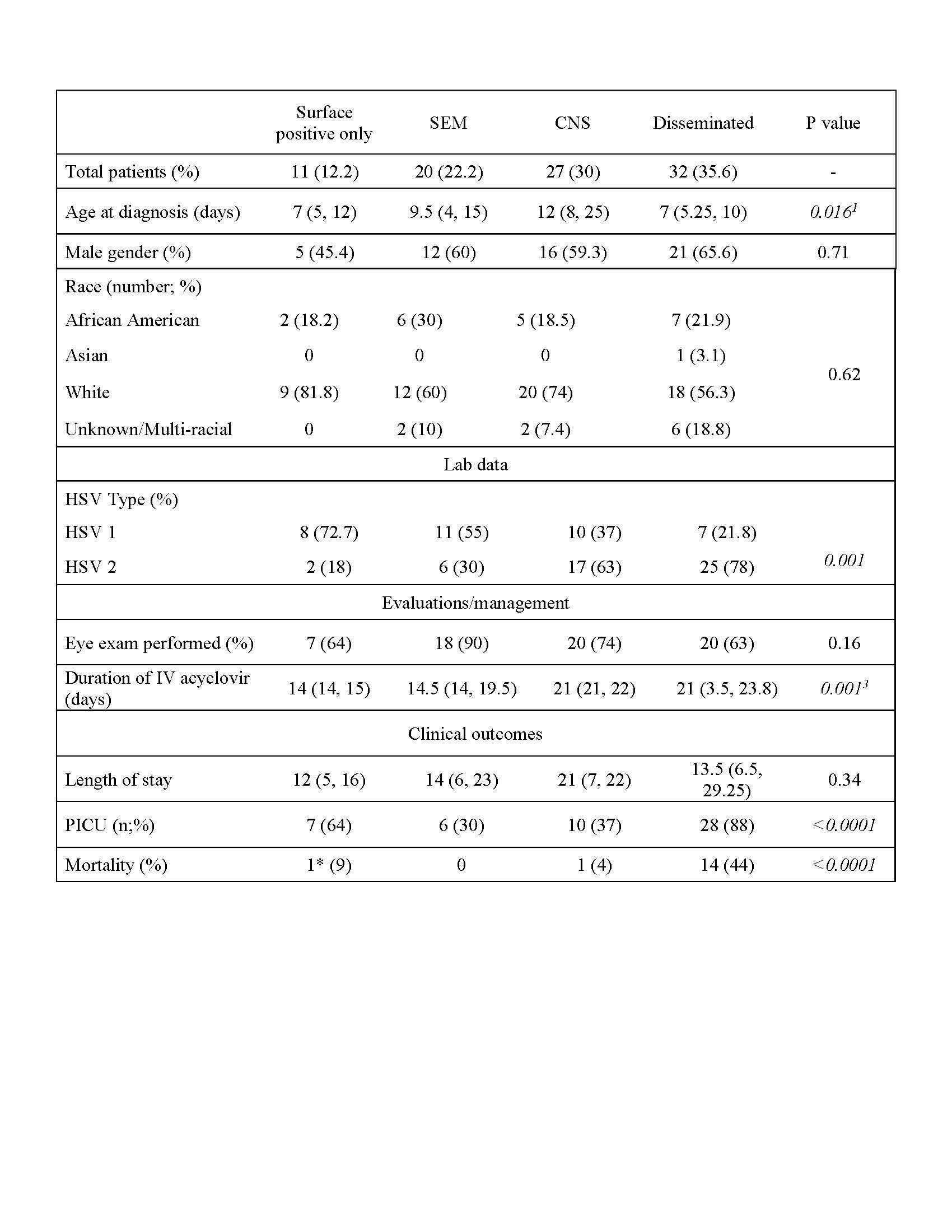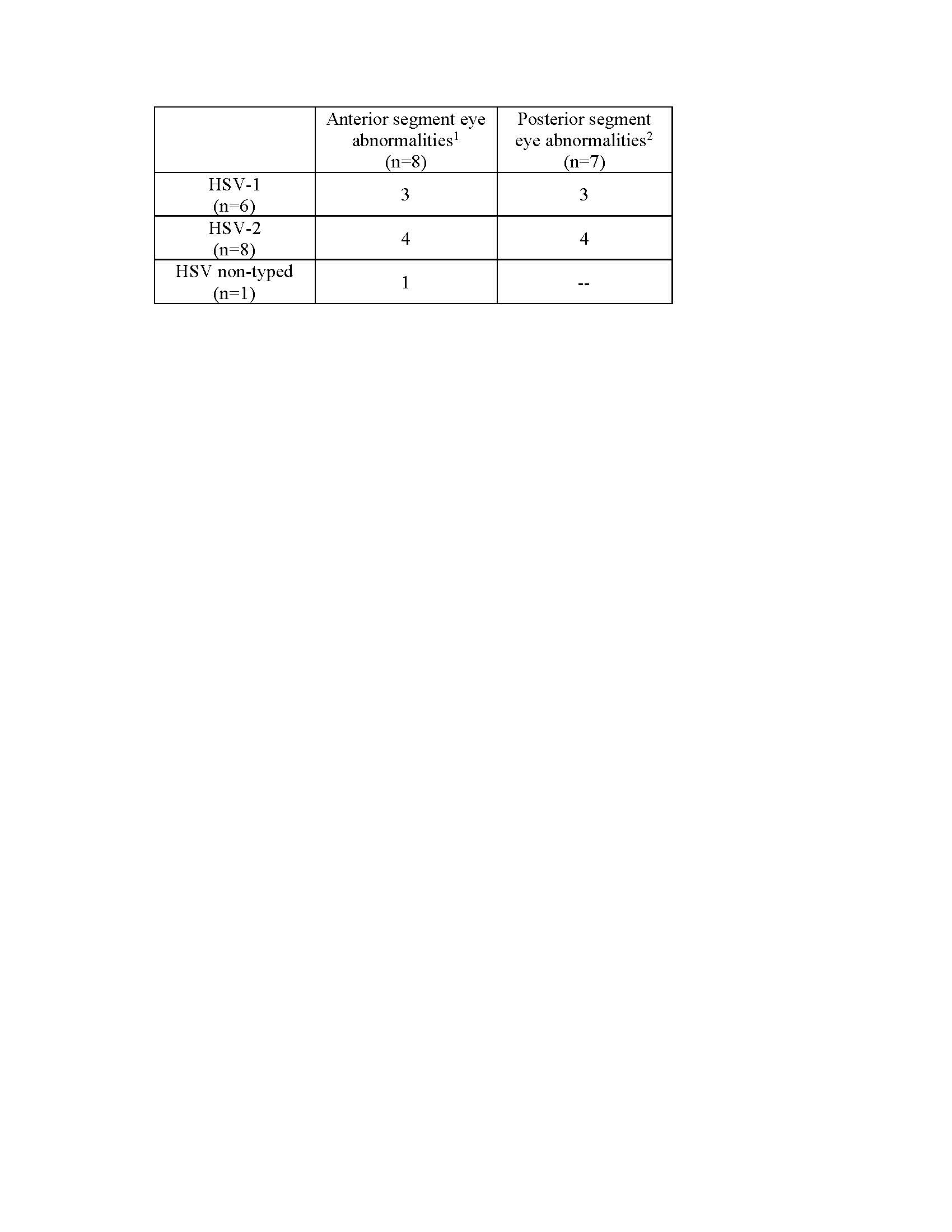Neonatal Infectious Diseases/Immunology
Neonatal Infectious Diseases/Immunology 4
422 - Neonatal Herpes Simplex Virus (HSV)-Associated Ocular Manifestations: The Hidden Disease
Publication Number: 422.335

Guillermo J. Yepes Junquera, MD (he/him/his)
Infectious Disease Fellow
Nationwide Children's Hospital
Dublin, Ohio, United States
Presenting Author(s)
Background:
Although the recommendation is that every neonate with HSV infection have an ophthalmologic examination, scant information exists regarding the frequency, timing, and severity of neonatal HSV-associated ocular manifestations that may help guide the management of these infants.
Objective:
To describe the frequency, timing, and severity of neonatal HSV-associated ocular manifestations
Design/Methods:
Retrospective study from 7/2003-7/2022 of infants ≤42 days old with PCR-confirmed HSV disease admitted to Nationwide Children’s Hospital (NCH) and affiliated NICUs. Infants were identified by ICD-9/10 codes before 2012 and then by prospective surveillance. Neonatal infection was categorized by extent of disease: skin-eye-mouth (SEM), disseminated (DIS), central nervous system (CNS), or HSV+ “surface” only. Information regarding ocular manifestations and outcomes were recorded.
Results:
During the 19-year period, 90 infants were hospitalized with HSV disease and 65 (72%) had at least one eye exam performed (Table 1). Overall, 23% (15/65) of infants had HSV-associated ocular abnormalities on initial or follow-up exams: SEM (39%; 7/18), CNS (15%; 3/20), and DIS (25%; 5/20). No eye abnormalities were observed in infants with HSV+ surface only. Most (73%; 11/15) abnormalities were identified on initial eye evaluations but 27% (4/15) were identified only on follow-up examination. Ocular abnormalities were associated with HSV-2 in 8 infants (53%), HSV-1 in 6 (40%), and HSV was not typed in one infant (7%). The proportion of anterior or posterior segment eye abnormalities was comparable (Table 2) and included keratoconjunctivitis (n=4), punctate epithelial erosions (n=2), chorioretinitis (n=4), and retinal hemorrhages (n=1) on initial examination. Four (24%) of 17 infants with normal initial eye exam had abnormal follow-up eye exams performed within 2-16 days and included keratitis (n=2), punctate epithelial erosions (n=1) and Bell’s palsy with irregular corneal staining (n=1). Five additional infants (CNS, 1; SEM, 4) had worsening ocular disease during hospitalization. All infants received IV acyclovir. Topical trifluridine and intravitreal ganciclovir were provided to some infants. Ocular findings resolved in all except three infants who had severe retinal scarring/fibrosis or corneal scarring that led to blindness.
Conclusion(s):
Ocular abnormalities occurred in 23% of neonates with HSV disease and and may not be evident on initial ophthalmologic exam. Follow up dilated ophthalmologic exams are warranted to ensure potentially blinding ocular complications from HSV.


